jjjjjj
Find Help
More Items From Ergsy search
-
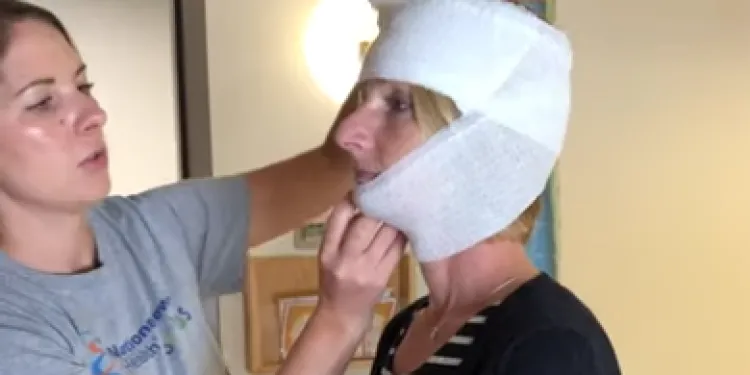
How to apply wet wrap bandaging to the head and face area.
Relevance: 100%
-
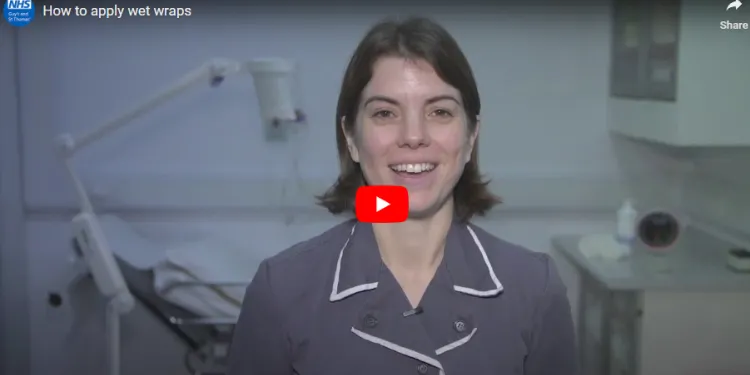
How to apply wet wraps
Relevance: 62%
-
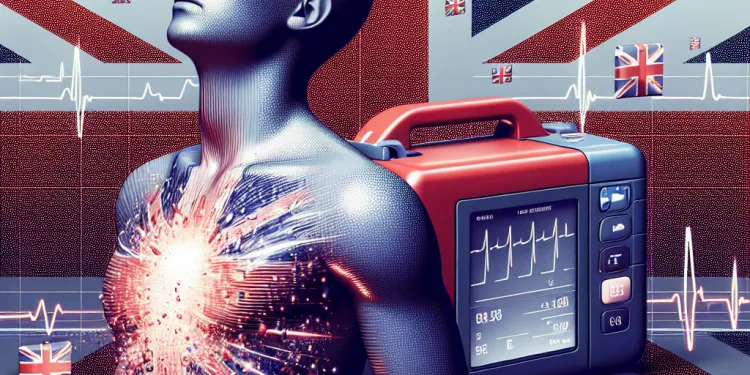
Can you use a defibrillator on a wet person?
Relevance: 24%
-

Can I use wet clothing to help stay cool?
Relevance: 21%
-

What are head lice?
Relevance: 19%
-

Head and Neck Cancer Diagnosis
Relevance: 18%
-

Are nits and head lice the same thing?
Relevance: 18%
-
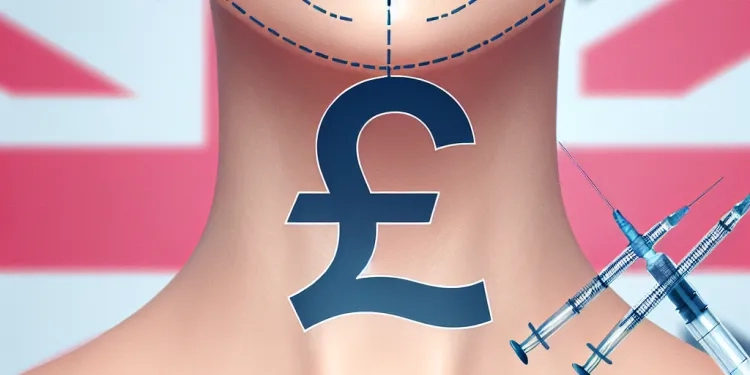
What areas can be treated with Botox?
Relevance: 17%
-

Radiotherapy to the Head and Neck: A Guide for patients and their carers
Relevance: 17%
-

Self-care for sprains and strains
Relevance: 17%
-

How to treat a scald burn
Relevance: 16%
-
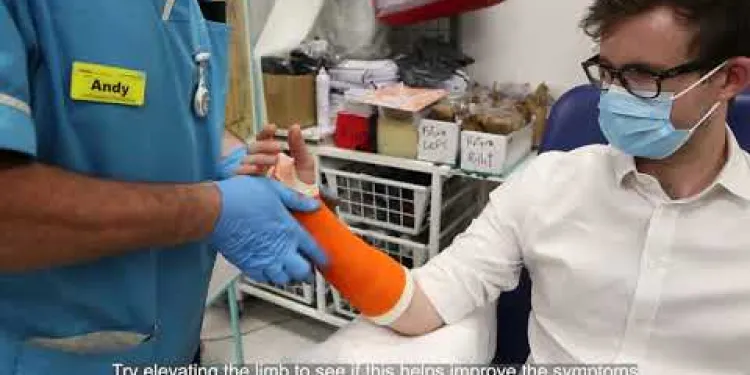
Fracture Clinic: Plaster Casts
Relevance: 16%
-

What should I do if I overstay my 90-day limit in the Schengen Area?
Relevance: 15%
-

Can concussions occur without a direct blow to the head?
Relevance: 15%
-

Should I use a different SPF for my face and body?
Relevance: 15%
-
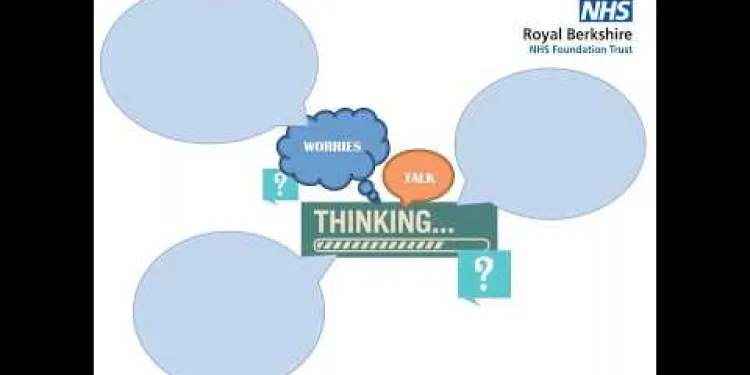
Royal Berkshire NHS Foundation Trust: Radiotherapy for head and neck cancers
Relevance: 15%
-

What treatments are available for eczema?
Relevance: 15%
-

What are the entry requirements for the rest of the Schengen Area?
Relevance: 13%
-

Is it legal for my neighbor to have a security camera facing my property?
Relevance: 13%
-

What challenges do water companies face in maintaining infrastructure?
Relevance: 13%
-

How can I cool down quickly if I start feeling overheated?
Relevance: 13%
-

Study Reveals Disparities in Welfare Support Between Urban and Rural Areas
Relevance: 12%
-

Which UK areas are most affected by sewage pollution?
Relevance: 12%
-

Is hay fever more common in urban areas?
Relevance: 12%
-

How to treat a sprained ankle
Relevance: 12%
-

Has the screw worm been eradicated in some areas?
Relevance: 12%
-

Where can nits be found?
Relevance: 12%
-
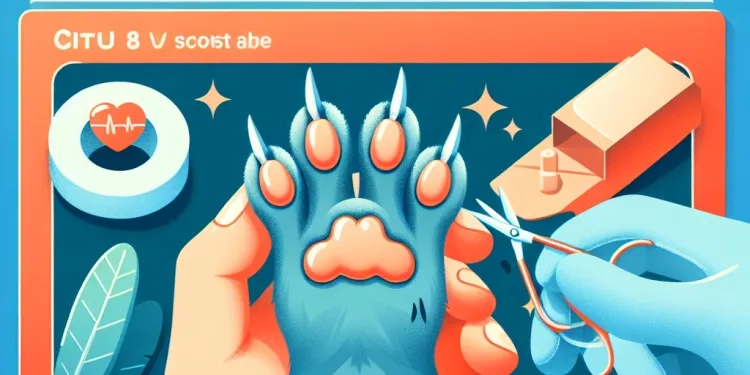
How to treat a cat bite
Relevance: 12%
-

What can I do if I face discrimination as a gig worker?
Relevance: 12%
-

Can gonorrhoea infect areas other than the genital organs?
Relevance: 12%
-

Can I install my own camera to monitor the area in question?
Relevance: 11%
-

How can I check if there is a hosepipe ban in my area?
Relevance: 11%
-

Think Pharmacy: Sprains and Strains
Relevance: 11%
-

Greenwashing Lawsuits Increase as Environmental Claims Face Legal Checks
Relevance: 11%
-

What role do Area Agencies on Aging play in supporting seniors?
Relevance: 11%
-

What are the common challenges faced by primary care support workers?
Relevance: 11%
-

Where can I find the latest updates on Zika virus risk areas?
Relevance: 11%
-

Can I specialize in a certain area of nursing with the NHS?
Relevance: 11%
-

Strategies for Reducing Loneliness and Social Isolation in Urban Areas
Relevance: 11%
-

Government Faces Backlash Over Welfare System Access Delays
Relevance: 11%
A short video demonstrating how to apply wet wrap bandages to the head and face area.
Wet wraps to the face are a valuable tool for individuals living with eczema. This therapeutic approach involves the application of damp layers onto the affected facial areas.
Wet wraps assist with skin hydration, a critical element in managing eczema. Eczema-prone skin tends to be dry and susceptible to irritation. By enveloping the face in moist layers, the skin absorbs water, promoting better hydration. This, in turn, alleviates dryness and mitigates the severity of eczema symptoms.
Wet wraps provide a cooling effect, offering immediate relief from the persistent itchiness that often accompanies eczema. The cool sensation helps soothe inflamed skin, reducing the urge to scratch and minimizing the risk of further skin damage. This can be particularly beneficial for facial eczema, where scratching can lead to increased redness, potential infection, and psychological stress.
Moreover, wet wraps act as a barrier, shielding the skin from environmental factors that can exacerbate eczema symptoms. The damp layers create a protective seal, preventing irritants from making direct contact with the sensitive facial skin. This barrier function contributes to the overall management of eczema and aids in the prevention of flare-ups.
How to Apply Wet Wrap Bandaging to the Head and Face Area
Introduction
Wet wrap bandaging is a therapeutic technique often used to treat severe eczema or other skin conditions by maintaining skin moisture and enhancing the absorption of topical medications. Here is a step-by-step guide on how to apply wet wrap bandaging to the head and face area, especially for readers in the United Kingdom.
Materials Needed
- Prescribed topical medication or moisturizer
- Sterile water
- Clean, soft bandages or gauze
- Dry, clean bandages or gauze
- Medical adhesive tape
- Scissors
- Non-latex gloves (optional)
Step-by-Step Instructions
1. Preparation
Ensure you have all your materials ready and clean hands before starting. Apply the prescribed topical medication or a thick layer of moisturizer evenly over the affected areas on the face and head.
2. Cutting Bandages
Cut the bandages or gauze into appropriate lengths that fit comfortably around the face and head. Make sure the pieces are large enough to wrap securely but not too tight.
3. Soaking Bandages
Soak the cut bandages or gauze in sterile water until they are thoroughly wet. Gently wring out the excess water so they are damp but not dripping.
4. Applying Wet Bandages
Carefully apply the damp bandages over the medicated or moisturized skin. Start from the forehead and work down towards the chin, covering the cheeks and other affected areas. Ensure the bandages are snug but comfortable and avoid covering the eyes, nostrils, and mouth.
5. Applying Dry Bandages
Next, apply dry bandages over the wet ones. This helps to create an occlusive barrier that retains moisture and medication on the skin. The dry bandages should be applied in a similar fashion to the wet ones, ensuring they are secure but not too tight.
6. Secure Bandages
Use medical adhesive tape to secure the bandages in place. Make sure the tape does not irritate the skin. If you have sensitive skin, opt for hypoallergenic tape. If available, wear non-latex gloves to ensure cleanliness throughout the process.
7. Monitoring and Removing
Keep the wet wraps on for the duration recommended by your healthcare provider, typically a few hours or overnight. Ensure the patient remains comfortable and check for any signs of irritation. Gently remove the wraps after the allotted time and reapply moisturizer if necessary.
Conclusion
Applying wet wrap bandaging to the head and face area can be an effective way to manage skin conditions. Always follow the advice and recommendations of your healthcare provider when using this technique. For further supplies, consult local pharmacies in the UK or your healthcare provider.
This short video shows how to put wet wrap bandages on the head and face.
Wet wraps on the face help people with eczema. Eczema makes the skin itchy and dry. Wet wraps are damp cloths that you put on itchy skin.
Wet wraps help keep your skin wet. Eczema skin can be very dry. When you put wet wraps on your face, they help the skin get more water. This makes the skin less dry and helps with itchiness.
Wet wraps feel cool on the skin. They help stop the itchy feeling from eczema. When your skin is cool, you feel better and don't want to scratch. This is good because scratching can make the skin red, hurt more, and even get infected.
Wet wraps also protect your skin. They keep things that might hurt your skin away. Wet wraps make a cover over your skin, so bad things don’t touch it. This helps stop eczema from getting worse.
Some people find tools like timers helpful when using wet wraps. You could also use reminders or alarms on your phone to remember to apply and remove the wraps. Talk to a healthcare provider if you need help or have questions about using wet wraps.
How to Apply Wet Wrap Bandaging to the Head and Face Area
Introduction
Wet wrap bandaging helps with dry, itchy skin like eczema. It keeps the skin moist and helps medicine work better. Here is how you can do it on the head and face. This guide is for people in the United Kingdom.
What You Need
- Medicine or moisturizer for the skin
- Clean water
- Soft bandages or gauze
- Dry bandages or gauze
- Medical tape
- Scissors
- Gloves (optional)
Instructions
1. Get Ready
Make sure all items are ready and your hands are clean. Put the cream or lotion on the skin where needed.
2. Cut Bandages
Cut bandages to fit around the face and head. They should be big enough to stay in place but not too tight.
3. Wet the Bandages
Put the bandages in water until they are wet. Squeeze out extra water. They should be damp, not dripping.
4. Place Wet Bandages
Put the damp bandages on the face and head. Start at the forehead and go down to the chin. Do not cover the eyes, nose, or mouth.
5. Add Dry Bandages
Put dry bandages over the wet ones. This keeps the moisture and medicine in the skin. Make sure they are not too tight.
6. Secure the Bandages
Use tape to keep the bandages in place. Be careful that the tape does not hurt the skin. Use special tape if your skin is sensitive. Gloves can help keep things clean.
7. Check and Remove
Keep the bandages on for the time your doctor says, like a few hours or overnight. Make sure it feels okay and check the skin. Take off the bandages when the time is up and put on more moisturizer if needed.
Conclusion
Using wet wrap bandaging on the head and face can help with skin problems. Always listen to your doctor's advice. For more items, ask local UK pharmacies or your doctor.
Frequently Asked Questions
What is wet wrap bandaging?
Wet wrap bandaging involves wrapping a wet layer of bandage around the skin, followed by a dry layer, to help manage severe eczema or other skin conditions.
When should I use wet wrap bandaging for the head and face area?
Wet wrap bandaging should be used when prescribed by a healthcare professional to manage severe eczema, dermatitis, or other skin conditions.
What materials do I need for wet wrap bandaging?
You will need moisturising cream or prescribed ointment, sterile bandages or gauze, and a dry layer such as tubular bandages or a clean, dry cloth.
How do I prepare the skin before applying wet wrap bandaging?
Cleanse the skin with a gentle cleanser, pat it dry gently, and then apply the prescribed moisturiser or medication evenly.
How do I apply the wet layer of the bandage?
Soak sterile bandages or gauze in warm water, wring out the excess water, and gently wrap the wet material around the head and face.
How do I secure the wet layer in place?
Ensure the wet layer is snugly fitted but not too tight. Use medical tape or wrap it around to stay in place.
How do I apply the dry layer of the bandage?
Place a dry tubular bandage, cloth, or a piece of dry gauze over the wet layer to keep it in place and to help retain moisture.
How often should I change the wet wrap bandages?
Follow your healthcare provider's advice, but typically the bandages should be changed every 12 to 24 hours.
Is there any discomfort associated with wet wrap bandaging?
Some people may feel a cooling sensation or mild discomfort initially, but it should not be painful. If you experience significant pain or irritation, consult your healthcare provider.
Can children use wet wrap bandaging for the head and face?
Yes, wet wrap bandaging can be used for children, but it should be done under the guidance of a healthcare professional.
How long should wet wrap bandages remain on the skin?
This depends on the specific advice from your healthcare provider, but usually, it can range from a few hours to overnight.
Can I use wet wrap bandaging on broken or infected skin?
If the skin is broken or infected, consult your healthcare provider before applying wet wrap bandaging.
What are the benefits of wet wrap bandaging for the head and face?
Wet wrap bandaging helps to hydrate the skin, enhance the effectiveness of topical treatments, and reduce itching and inflammation.
Are there any side effects of using wet wrap bandaging?
Potential side effects include increased skin sensitivity, chilling, or rare instances of infection. Always follow your healthcare provider’s instructions.
Can wet wrap bandaging be used with other treatments?
Yes, wet wrap bandaging is often used in conjunction with topical medications and moisturisers as part of a comprehensive treatment plan.
What is Wet Wrap Bandaging?
Wet wrap bandaging is a way to help your skin feel better.
It uses soft clothes and creams.
You put cream on your skin. Then, you wrap a soft wet cloth and a dry cloth over it.
This helps to cool and calm the skin.
Ask an adult or a doctor to help with wet wrap bandaging.
You can use pictures or videos to see how it's done.
Wet wrap bandaging is a way to help with bad skin problems like eczema. First, you put a wet bandage on the skin. Then, you cover it with a dry bandage.
This can make the skin feel better and heal faster.
If you find reading hard, you can try:
- Listening to a friend or family member read to you.
- Using a reading tool that reads the text out loud.
- Breaking up the text into smaller parts.
When should I use wet wrap bandaging for the head and face area?
Use wet wrap bandaging on the head and face when the skin is very dry, itchy, or sore. It helps to keep skin moist and comfortable.
Make sure to talk to a doctor or nurse before using wet wraps. They can show you how to use them safely. It is important to get help so you know you are doing it right.
Some people find using special lotions or creams helps too. Ask which ones are best for you.
Only use wet wrap bandages if your doctor or nurse tells you to. They help with bad skin problems like eczema or dermatitis.
What things do I need for wet wrap bandaging?
Here are some things you will need:
- Soft cloth bandages or wraps
- A bowl of water
- Moisturizer or cream
- Scissors
Tips:
- Ask someone to help if you need it.
- Use simple picture guides. They can be helpful.
You will need cream to keep your skin soft, special ointment from the doctor, clean bandages or gauze, and a dry covering like tubular bandages or a clean, dry cloth.
How do I get the skin ready before putting on wet wrap bandages?
Follow these easy steps to get the skin ready:
- Clean the skin gently with warm water.
- Pat the skin dry with a soft towel; don't rub.
- Put on lots of moisturizing cream to keep the skin soft.
- Ask someone for help if you find it hard to do.
Using these steps can make your skin feel better.
Wash your skin with a soft soap. Dry your skin by patting it with a towel. Then put on the cream or medicine your doctor gave you. Spread it evenly.
How do I put on the wet part of the bandage?
Here is how you can do it:
- Get the bandage ready.
- Make the bandage wet with clean water.
- Put the wet bandage on the skin where you need it.
Helpful Tips:
- Ask someone to help you if you find it hard.
- Use a timer to know how long to keep it on.
Get some clean bandages or gauze. Dip them in warm water. Squeeze out the extra water. Gently wrap the wet bandages around the head and face.
How do I keep the wet layer from moving?
Here is an easy way to keep the wet layer still:
1. Use a towel or cloth to gently press on the wet layer. This helps it stay put.
2. Make sure the surface under the layer is flat and not bumpy. A smooth surface helps the layer stay in place.
3. You can use clips or pins to hold the edges of the layer. Be careful not to poke yourself!
4. Ask someone to help you if the layer is very big or if you have trouble. It’s okay to ask for help.
Using these simple steps can help keep the wet layer right where you want it.
Make sure the wet layer fits well. It should not feel very tight. Use medical tape to keep it in place.
How do I put the dry part of the bandage on?
Follow these steps to put the dry part of the bandage on:
- Wash your hands with soap and water.
- Make sure the dry bandage is clean.
- Place the dry bandage on the wound gently.
- Use tape or a wrap to hold the bandage in place.
For more help, ask an adult or use a picture guide.
Put a dry bandage, cloth, or dry gauze on top of the wet bandage. This will hold it in place and keep it wet.
How many times do I need to change the wet bandages?
Here is some simple advice:
- Change the bandages when they feel dry or dirty.
- If they start to smell, it's time to change them.
- A doctor might tell you a special time to change them each day, listen to them.
Tools to help you:
- Set a timer to remind you to check the bandages.
- Ask an adult to help you learn how to change them.
Listen to what your doctor or nurse says. Usually, you should change the bandages every 12 to 24 hours.
Do wet wrap bandages hurt?
Wet wrap bandages can sometimes feel a bit uncomfortable or itchy. It's important to make sure they fit well and are not too tight.
If you feel any pain, tell an adult so they can help you.
Using a soft cloth to wrap or adding a cream before putting on the bandage might make it feel better.
Some people might feel a cool feeling or a little bit of uncomfortableness at first, but it should not hurt. If it hurts a lot or bothers you, talk to your doctor.
Here are some ways to make reading easier:
- Use your finger to follow the words.
- Read out loud slowly.
- Ask someone to read with you.
- Take breaks if you feel tired.
Can kids use wet bandages on the head and face?
Yes, you can use wet wrap bandaging for children. But make sure to do it with help from a doctor or nurse.
How long should you keep wet bandages on your skin?
When you wrap wet bandages around your skin, keep them on for about 30 minutes to a few hours. This helps to make your skin feel better.
If you are unsure what to do, ask a doctor or a nurse for help.
Here are some tips to help you:
- Set a timer so you know when to take the bandages off.
- If you use a clock, look at the time when you start and when you want to finish.
- Get someone to remind you if you might forget.
Ask your doctor or nurse for advice. Usually, you might need to wait a few hours or maybe until the next morning.
Can I put a wet wrap bandage on broken or infected skin?
No, it is not safe. Wet wrap bandaging should not be used on skin that is broken or has an infection. It can make things worse.
If you have broken or infected skin, talk to a doctor or nurse first. They can help you find the best way to take care of your skin. Use soft, clean bandages instead.
Remember, it is important to keep skin clean and safe. Always ask for help if you are not sure what to do.
If your skin is hurt or has a cut, or if it is sick, talk to your doctor before using a wet wrap bandage.
How do wet bandages help your head and face?
Using wet bandages on your head and face can be very helpful. Here are some ways they can help:
- Calm Itching: Wet bandages can stop itching, so you feel better.
- Cool and Relax: They keep your skin cool and help it feel good.
- Keep Skin Moist: Wet bandages make sure your skin stays nice and moist, not dry.
- Protect Skin: They help keep your skin safe from scratching and hurting.
When using wet bandages, ask a grown-up or a doctor for help. They can show you the right way to do it. You can also use timers or alarms to remember when to change the bandages.
Wet wrap bandaging helps to keep the skin wet and soft. It makes skin creams and medicine work better. It also helps stop itching and swelling.
Can wet wrap bandaging cause any problems?
Wet wrap bandaging is when you use wet bandages on your skin. It helps make the skin feel better. Here are some things to watch out for: - **Itching:** Your skin might feel itchy. - **Infection:** Keep the bandages clean to stop germs. - **Skin feeling too wet:** Change the bandages if they feel too wet. **Tips to Help:** - Ask an adult to help you. - Wash your hands before and after. - Use soft bandages. If you are worried, talk to a doctor or nurse.You might notice your skin feels more sensitive, you may feel cold, or very rarely, you might get an infection. Always listen to what your doctor tells you to do.
Can I use wet wrap bandages with other treatments?
Yes, you can use wet wrap bandages with other treatments.
Here are some tips to help you:
- Talk to your doctor before mixing treatments. They can give you good advice.
- Use cream or lotion on your skin before putting on the wet wrap bandages. This makes the treatment work better.
- If you have any questions, ask someone you trust. They can help explain it to you.
Yes, we use wet wrap bandages with creams and lotions. This helps the skin feel better.
Useful Links
- Ergsy carfully checks the information in the videos we provide here.
- Videos shown by Youtube after a video has completed, have NOT been reviewed by ERGSY.
- To view, click the arrow in centre of video.
- Most of the videos you find here will have subtitles and/or closed captions available.
- You may need to turn these on, and choose your preferred language.
- Go to the video you'd like to watch.
- If closed captions (CC) are available, settings will be visible on the bottom right of the video player.
- To turn on Captions, click settings .
- To turn off Captions, click settings again.
More Items From Ergsy search
-

How to apply wet wrap bandaging to the head and face area.
Relevance: 100%
-

How to apply wet wraps
Relevance: 62%
-

Can you use a defibrillator on a wet person?
Relevance: 24%
-

Can I use wet clothing to help stay cool?
Relevance: 21%
-

What are head lice?
Relevance: 19%
-

Head and Neck Cancer Diagnosis
Relevance: 18%
-

Are nits and head lice the same thing?
Relevance: 18%
-

What areas can be treated with Botox?
Relevance: 17%
-

Radiotherapy to the Head and Neck: A Guide for patients and their carers
Relevance: 17%
-

Self-care for sprains and strains
Relevance: 17%
-

How to treat a scald burn
Relevance: 16%
-

Fracture Clinic: Plaster Casts
Relevance: 16%
-

What should I do if I overstay my 90-day limit in the Schengen Area?
Relevance: 15%
-

Can concussions occur without a direct blow to the head?
Relevance: 15%
-

Should I use a different SPF for my face and body?
Relevance: 15%
-

Royal Berkshire NHS Foundation Trust: Radiotherapy for head and neck cancers
Relevance: 15%
-

What treatments are available for eczema?
Relevance: 15%
-

What are the entry requirements for the rest of the Schengen Area?
Relevance: 13%
-

Is it legal for my neighbor to have a security camera facing my property?
Relevance: 13%
-

What challenges do water companies face in maintaining infrastructure?
Relevance: 13%
-

How can I cool down quickly if I start feeling overheated?
Relevance: 13%
-

Study Reveals Disparities in Welfare Support Between Urban and Rural Areas
Relevance: 12%
-

Which UK areas are most affected by sewage pollution?
Relevance: 12%
-

Is hay fever more common in urban areas?
Relevance: 12%
-

How to treat a sprained ankle
Relevance: 12%
-

Has the screw worm been eradicated in some areas?
Relevance: 12%
-

Where can nits be found?
Relevance: 12%
-

How to treat a cat bite
Relevance: 12%
-

What can I do if I face discrimination as a gig worker?
Relevance: 12%
-

Can gonorrhoea infect areas other than the genital organs?
Relevance: 12%
-

Can I install my own camera to monitor the area in question?
Relevance: 11%
-

How can I check if there is a hosepipe ban in my area?
Relevance: 11%
-

Think Pharmacy: Sprains and Strains
Relevance: 11%
-

Greenwashing Lawsuits Increase as Environmental Claims Face Legal Checks
Relevance: 11%
-

What role do Area Agencies on Aging play in supporting seniors?
Relevance: 11%
-

What are the common challenges faced by primary care support workers?
Relevance: 11%
-

Where can I find the latest updates on Zika virus risk areas?
Relevance: 11%
-

Can I specialize in a certain area of nursing with the NHS?
Relevance: 11%
-

Strategies for Reducing Loneliness and Social Isolation in Urban Areas
Relevance: 11%
-

Government Faces Backlash Over Welfare System Access Delays
Relevance: 11%


